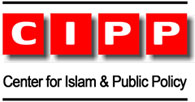Teresa Watanabe, Los Angeles Times
Published 4:00 am, Tuesday, April 18, 2000
The census has caused anxiety — even anger in some quarters — with its questions about everything from income to plumbing. But there is one major aspect of American life it fails to cover: religion.
Congress barred the Census Bureau in 1976 from compelling people to reveal their religious affiliations. As a result, America’s religious landscape remains surprisingly ill- defined. Some of the most fundamental presumptions are based on educated guesswork, suspect science or leaps of faith. Consider a few questions:
— Are Muslims displacing Jews as America’s largest non-Christian faith group? Muslim population estimates are highly controversial — ranging from a few million to 10 million.
— Are American Jews marrying outside the faith at a rate of 52 percent? Ever since that statistic was reported in 1991, fears that Jews could be headed down a demographic path to disappearance have topped the American Jewish agenda.
— Are Latinos abandoning traditional Christian denominations en masse for evangelical movements? Trying to define the number of evangelicals can be difficult. And pinpointing the number of Latinos, regarded as the evangelical world’s fastest-growing segment, is even dicier because their immigration status and language barriers stymie accurate counting.
Given existing complaints about the census, it might seem quixotic to suggest adding more questions. But the lack of reliable data is fueling calls for better ways to chart the most religiously diverse nation in the world. Some Jewish leaders, for example, are urging the U.S. census to begin including the faith question again — it was asked once, in 1957, as a voluntary survey.
But “any religious data you see (are) highly biased, and most of us tend to be very leery” of them, said Samia El-Badrey, a longtime demographer of Arab Americans who heads the Texas-based International Demographic and Economic Association.
“Most data (are) collected by religious organizations; hence they tend to be higher than reality because the sources want to make sure their numbers are high,” El-Badrey said.
By contrast, faith communities with no central hierarchy often don’t keep records at all. Buddhists, for instance, say they have no idea how large their community is overall — and aren’t particularly concerned about it.
Another minefield is methodology, demonstrated by the Jewish intermarriage debate.
When a Jewish population survey reported the 52 percent intermarriage rate in 1991, the reaction was furious. Suddenly, the issue of “continuity” exploded.
Orthodox Jews, with their traditional ways, large families and low intermarriage rates, produced a controversial chart claiming that only they would increase the number of Jews over time.
However, some demographers are questioning the statistic’s validity. Several new surveys indicate a lower intermarriage rate, according to Pini Herman, a consultant to the Jewish Federation of Los Angeles.
A thornier question among religious demographers is the size of the Muslim population.
The American Muslim Foundation contends that unreliable numbers have prevented Muslims from claiming their fair share of minority rights, political recognition and business opportunities.
But the Islamic tradition is not particularly conducive to data collection. Muslims do not organize themselves in a hierarchical mosque structure. Many people balk even at registering with mosques, believing their prayer life is between themselves and God, according to Hussam Ayloush of the Council on American-Islamic Relations in Anaheim.
http://www.sfgate.com/news/article/Religion-Off-Limits-in-Census-So-Gaps-in-Data-on-2787194.php
